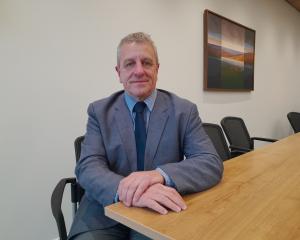Getting approval yesterday were the Alps to Ocean Trail (Mt Cook to Oamaru), the Clutha Gold Trail (Roxburgh to Lawrence) and the Queenstown Trail (a series of trails within the Wakatipu basin).
Acting Minister of Tourism Jonathan Coleman announced $18.85 million had been approved by the Government for eight trails under Nga Haerenga, the New Zealand Cycle Trail project.
Mr Coleman said the trails would "showcase the very best that New Zealand has to offer in terms of our landscapes, culture and communities".
"They will be a drawcard for both international and domestic visitors, and add a further dimension to our vibrant tourism sector."
The funding follows the evaluation of 13 phase-two trail feasibility studies submitted to the Ministry of Tourism in May.
A funding agreement for $4 million for the first stage (Walter Peak to Mossburn) of the previously-approved Around the Mountain Cycle Trail will be signed at the Southland District Council's offices in Invercargill today.
Tourism Waitaki general manager Annabel Gudsell said the Alps to Ocean Trail was the greatest tourism opportunity the Waitaki district had seen.
"It will drive visitors through the Waitaki Valley, will provide a range of business and employment opportunities, assist with revitalisation of our small towns and local businesses, diversification of land, and put Oamaru and the Waitaki district on the map as a tourist destination."
The community support for the venture had been "outstanding", with locals understanding the potential the venture had to provide both short- and long-term economic benefits, Ms Gudsell said.
Working party chairman Mike Neilson said the funding announcement was "great news".
He believed the trail would create the greatest tourism investment impact on the local economy since The Hermitage was built at Aoraki-Mt Cook more than a century ago.
"It's massive," he said.
The 312km trail starts at the foot of Aoraki/Mt Cook and ends in Oamaru.
Riders cycle through Lake Ohau township, Omarama, Otematata, Kurow, Duntroon, and Tokarahi in the Waiareka Valley.
The $2.54 million approved yesterday for the Clutha Gold Trail does not include the 34km Roxburgh Gorge section, which Dr Coleman said needed further investigation to confirm its feasibility.
A final decision on its funding will be made by the end of October.
Central Otago District Council business development manager Jonathan Gadd said the funding was great news for the district.
"The certainty of Government funding for Clutha Gold and the potential for the Roxburgh Gorge one to proceed is really important at this stage.
That is one solid peg in the ground for those projects and it will make a big difference in sorting out some of the other issues surrounding them."
Clutha Gold Trail Trust chairman Rod Peirce, of Roxburgh, said the news was a reward for the huge effort put in already.
"We're very happy to reach this stage of proceedings and get funding guaranteed, but the hard work isn't over yet."
He believed the whole trail was feasible and was confident the Beaumont to Lawrence portion would also be allocated funds in the next round, after some "fine-tuning" of the plans.
In Queenstown, a timeline for construction of the 99km of the Queenstown Trail - formerly the Wakatipu Trail - began yesterday.
The trail, which, it was estimated, would bring about $20 million into the Queenstown economy over the next five years and potentially increase the average visitor stay from 2.9 nights to four, would have far-reaching benefits.
Queenstown Lakes District Council parks and open spaces director Paul Wilson said the network would appeal to tourists, and also provide commuter links between Gibbston, Arrowtown, Lake Hayes Estate, Frankton and Queenstown.
Parts of the trail would not require consent, so that construction would begin immediately.
Resource consent for the remaining parts could be lodged within two months and it was hoped the trail network would be complete by next spring.
Wakatipu Trails Trust chief executive Kaye Parker said the announcement had given the trust "the green light", which would have exponential benefits to visitors and residents.
"The community has seen something in it for themselves, but they also see that we're bringing new tourists to the community ... we're also building a legacy for the future."












